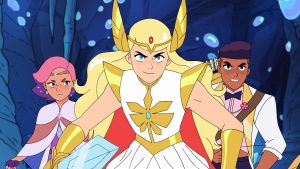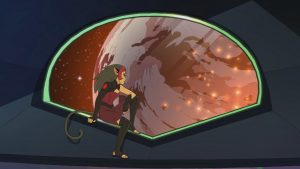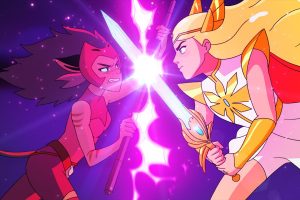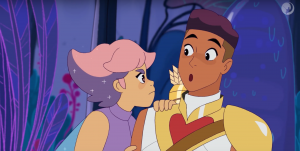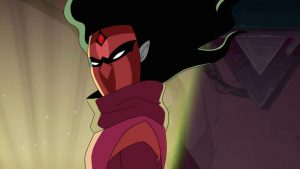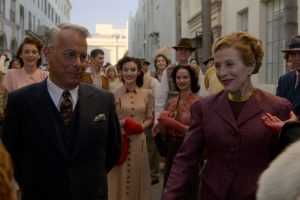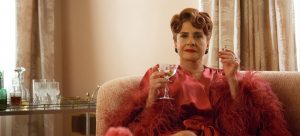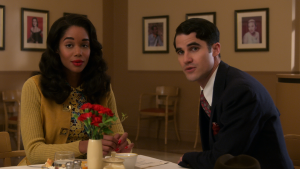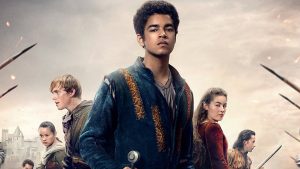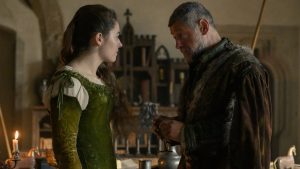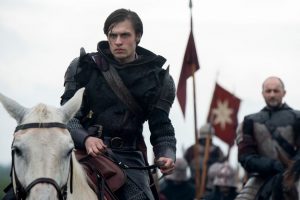SPOILERS FOR ALL FIVE SEASONS OF SHE-RA AND THE PRINCESSES OF POWER AHEAD!
Now that Netflix’s hugely successful She-Ra reboot has closed out its five-season run with an incredible finale, I think it’s high time we looked back at the series’ cast of complex, nuanced characters, and so I’ve decided to make a comprehensive list ranking the eight Princesses of Power who make up most of the show’s core cast, and whose alliance against the evil Lord Hordak (and, later, Horde Prime) forms the main thrust of the plot. Even when united by the magical link between their runestones, these Etherian Princesses are also compelling characters individually, and their unique personalities, powers and story arcs are what will be factored into my rankings.
Though it might be considered controversial, I’ve made the choice not to include She-Ra herself on this list, as I felt that the other Princesses are already overshadowed by her enough throughout the series: even though She-Ra is, strictly speaking, a Princess of Power, she’s so far beyond most of the others in terms of power and character development, it felt unfair to put her alongside them.
8: Spinnerella

Voiced by series showrunner Noelle Stevenson, Spinnerella seemed like a one-off cameo when she showed up in the first season of She-Ra, and it’s largely because of her small amount of screen time that she comes in last on my list: even though I think her character design is charming, Stevenson’s voice-work is excellent, and Spinnerella’s ability to control spiraling tornadoes is visually striking, she’s the one Princess who we still really don’t know that much about outside of her marriage to Princess Netossa (which is an event that happened offscreen, presumably before the first season opens, and thus isn’t ever touched upon except through mentions of a wedding anniversary in Season 5). Towards the end of the series, Spinnerella finally got a couple of awesome moments – but those were while she was an unwilling villain, mind-controlled by Horde Prime. With maybe a few more scenes to highlight her personality or explore her background (for instance: where does she come from? What is her Runestone?), I think she would probably have made a much bigger impression.
7: Frosta
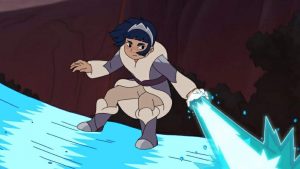
I honestly don’t know if I’m in the minority with this opinion, but I was not overly fond of Princess Frosta. She was massively overhyped prior to her introduction towards the end of the first season, with Adora even drawing up military strategies for how to talk to her, and the Alliance determining that, if they could bring her to their side, they could win over all the remaining Princesses due to Frosta’s various connections. I enjoyed the reveal that she was actually a child (and a petulant, bratty one at that), but I felt like everything after that has been more and more wheel-spinning for her character. Even with the power to control ice, and a wickedly cool castle isolated in the mountains, Frosta has never been at the forefront of any stories since her debut: in season 2, she slowly earns Glimmer’s admiration and respect after initially coming off as clingy and obsessive; and in the final season, she and the recently returned Micah have some fun interactions as he prepares himself for his reunion with his own daughter – but for the most part, even more so than Princess Scorpia, Frosta has only ever been “the muscle”, who comes in handy when the teams needs to punch something with a spiky ice-fist.
6: Netossa
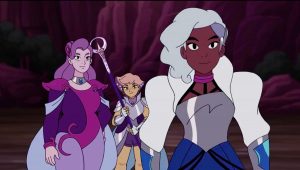
Introduced alongside Spinnerella as the air-borne Princess’ wife and constant companion, Netossa seemed, if anything, even more vague and unnecessary – her power to throw magical nets at things was random, and her character had barely any dialogue or interactions with anyone besides Spinnerella. But in the fifth season, Netossa suddenly became the Princess Alliance’s MVP with an unexpected and mind-blowing upgrade: she became the first character to lose someone to Horde Prime’s mind-control tactics, but she never once gave up hope that her wife would come back to her when confronted with her unconditional love, and her quest to win back her “Spinny”, carried out over multiple episodes, was written beautifully. Her fight-scenes with the brainwashed Spinnerella were a delight to watch (though also heartbreaking), and convinced me that magical net tossing is actually a legitimate skill-set and can be used in plenty of creative ways. Her can-do attitude and relentlessly romantic spirit made her relatable in ways she hadn’t been before. Voice actress Krystal Joy Brown deserves much of the credit for transforming Netossa from a peculiar background-character to one of the Princesses I’d most love to know more about.
5: Perfuma
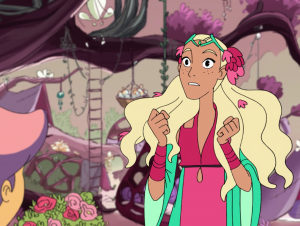
Perfuma was a slow-burn, as she took a while to find her footing among the other Princesses – after all, when she was first introduced, she was written to be pushy, overly demanding, and grating. As Princess of the forested region of Plumeria, Perfuma’s interests are purely in the gardens, trees and plants she cultivates using the powers of the Heart Blossom Runestone, and she is a peace-loving character, so she didn’t jump into the Alliance straight away: but when she did, and once she stopped pestering everyone about meditation and drum-circles, it turned out there was a lot to love about her – she still suffers from all her old faults, but she’s also done her part to work past them and develop more patience for others: in season 4, a surprisingly transformative moment for her character was when she had to work with the cacti dwelling in the Crimson Waste, much to her dismay. In season 5, she grew very close to reformed Horde soldier Scorpia and used her skills to help the shyer, more sensitive Princess nurture her own talents. Her character design (especially in Season 5, which saw her take on a cool new undercover alias and a new outfit to go along with it), voice work by Genesis Rodriguez (who also played a similar character, Honey Lemon, in Big Hero 6), and unique connection with Etheria’s nature have made her a consistently fun Princess to follow on her travels.
4: Mermista
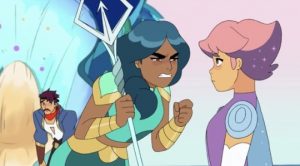
The Princess of Salineas has always been a mood: her sour attitude on life in general and her angsty, on-and-off relationship with the boisterous pirate captain Sea Hawk make her vastly dissimilar to the more positive Princesses of Power. But over the seasons, we’ve watched her develop and gain a number of character traits we couldn’t have seen coming – after all, who would have ever guessed she was an avid reader of mystery novels, or that her reading habits would ever help the team discover a traitor in their midst? Who would have suspected that she herself took up Sea Hawk’s pyromaniacal tendencies and tried her hand at burning boats? But her biggest opportunity for development was when the Horde, helped by rogue Princess Entrapta, invaded Salineas and took everything from her, including her throne, her Runestone, and her status. After spending a long time sulking in a bathtub (being able to turn into a mermaid is good for some things) and eating ice cream, Mermista got back on her feet and became a stronger fighter than ever – which turned out to be both a blessing and a curse, as she later became brainwashed by Horde Prime and briefly used her powers against the other Princesses. Once you add the magic touch from Vella Lovell’s voice acting, you get a well-rounded and complicated character who may be a bit of a disaster at times, but is still fun, competent and relatable.
3: Scorpia
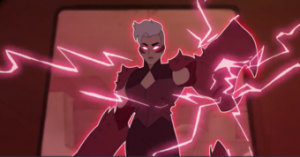
Scorpia had to embark on a long and difficult journey of self discovery before she could come into her own, and it’s no wonder – despite being the Princess of the Fright Zone, she had her connection to the magical Black Garnet severed while she was still very young, and the choice to relinquish the Fright Zone into the hands of Lord Hordak was made by her grandfather, thus abandoning Scorpia to a fate she had never asked for, as a soldier and later a Force Captain for the Horde. But Scorpia’s most defining character trait has always been her loyalty – without question, she did whatever the Horde asked her to do, which included turning on her fellow Princesses. It took her a long time before she had the courage to stand up to the Horde, and, in particular, Force Captain Catra, whom she had always considered her best friend. But when she did, and realized that she could still harness the electric powers of the Black Garnet, Scorpia never looked back: she is now defined not by the abuse and trauma she suffered, but by the action she took to make sure it would never happen again – not to herself, and not to anyone else. On top of all that, she’s also a great hugger and an amazing singer (and, of course, all the credit for that goes to voice actress Lauren Ash).
2: Glimmer
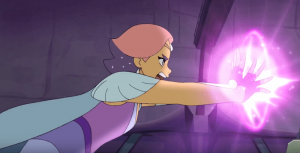
Glimmer has had the most screen time and development out of all the characters on this list, thanks to her unforeseen transition from princess to queen of Bright Moon, after her mother Angella’s death in season 3. That transition, though undeniably sad, was necessary to turn Glimmer from the reckless, impulsive character she had been up until that point into a more rational, strategical and calculating leader – though it wasn’t easy for her, as she proved when she fell victim to Shadow Weaver’s manipulations soon afterwards and chose to unleash the powers of the Heart of Etheria, even overriding The Beacon and invading the Fright Zone with Scorpia. Thankfully, in season 5, Glimmer had a chance to find her footing before she could be pulled any further down the dark path she had been walking – with the help of her friends and family, she was able to fix the damage she had caused. But even though she came back to the light with her morality intact, she did retain much of the knowledge she had learned from Shadow Weaver, including a talent for dark magic – a much-needed upgrade, since Glimmer had always been unique in that she had to recharge her own powers, derived from the Moonstone, in between battles. Ultimately, I’m putting Glimmer in second place because, while I love her character and Karen Fukuhara’s voice work, I still don’t think anyone compares to my favorite Princess of Power…
1: Entrapta
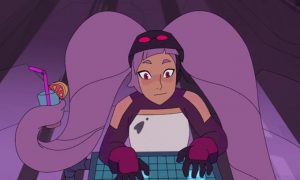
I didn’t expect to like Entrapta at all: her debut episode in the series, early in the first season, felt like filler while I was watching it for the first time, and I had difficulty believing this geeky, purple-haired Princess, living in the mountains with an army of murderous robots and a squad of bakers specializing in miniature pastries, could be of any use to the Rebellion, or an interesting character in her own right. And for a few more episodes, I thought I was justified in thinking that – until the fateful moment when Entrapta made the choice to stay with the Horde because….they had cooler tech. By firmly moving her from one side of the conflict to the other in a way that was shocking but still felt completely logical (because Entrapta had already been established as someone who cared more about tech than anything else), the showrunners turned her into the series’ most fascinating character. Since then, Entrapta has battled her moral compass, she’s slowly learned how to develop friendships, she’s maybe even fallen in love with Hordak of all people – and through it all, she’s always been unabashedly herself. Even in season 5, she has to physically stop herself from joining Horde Prime because he has spaceships! Am I the only one who thinks that’s super cool? As voiced by Christine Woods, the nerdy, complicated Entrapta is far and away my favorite Princess of Power.
So there you have it: all eight of She-Ra‘s Princesses, ranked. What do you think of my list? Which rankings do you agree with? Who is your favorite Princess? Share your own thoughts and opinions in the comments below!
